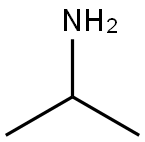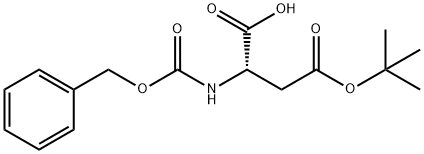3-Isopropoxypropylamine
Synonym(s):IPOPA
- CAS NO.:2906-12-9
- Empirical Formula: C6H15NO
- Molecular Weight: 117.19
- MDL number: MFCD00008220
- EINECS: 220-816-2
- SAFETY DATA SHEET (SDS)
- Update Date: 2025-09-25 17:15:13

What is 3-Isopropoxypropylamine?
Chemical properties
CLEAR COLOURLESS TO LIGHT YELLOW LIQUID
The Uses of 3-Isopropoxypropylamine
3-Isopropoxypropylamine may be used as a reactant in the preparation of:
- 1-alcoxyalkyl-5-aryl-4-acyl-3-hydroxy-3-pyrrolin-2-ones
- 1-(p-sulfamyl)-phenyl-5-oxo-3-pyrrolidine carboxylic acid derivative
- ethyl 1,4-dihydro-1-(3-isopropoxypropyl)-4-oxo-3-quinolinecarboxylate
General Description
3-Isopropoxypropylamine is an aliphatic primary amine.
Properties of 3-Isopropoxypropylamine
| Melting point: | -65 °C |
| Boiling point: | 78-79 °C85 mm Hg(lit.) |
| Density | 0.845 g/mL at 25 °C(lit.) |
| refractive index | n |
| Flash point: | 42 °C |
| storage temp. | Flammables area |
| form | clear liquid |
| pka | 9.82±0.10(Predicted) |
| color | Colorless to Light yellow |
| Water Solubility | miscible |
| CAS DataBase Reference | 2906-12-9(CAS DataBase Reference) |
| NIST Chemistry Reference | 3-Isopropoxypropylamine(2906-12-9) |
| EPA Substance Registry System | 1-Propanamine, 3-(1-methylethoxy)- (2906-12-9) |
Safety information for 3-Isopropoxypropylamine
| Signal word | Danger |
| Pictogram(s) |
 Flame Flammables GHS02  Corrosion Corrosives GHS05 |
| GHS Hazard Statements |
H226:Flammable liquids H314:Skin corrosion/irritation H318:Serious eye damage/eye irritation H402:Hazardous to the aquatic environment, acute hazard |
| Precautionary Statement Codes |
P210:Keep away from heat/sparks/open flames/hot surfaces. — No smoking. P233:Keep container tightly closed. P240:Ground/bond container and receiving equipment. P260:Do not breathe dust/fume/gas/mist/vapours/spray. P264:Wash hands thoroughly after handling. P264:Wash skin thouroughly after handling. P273:Avoid release to the environment. P280:Wear protective gloves/protective clothing/eye protection/face protection. P310:Immediately call a POISON CENTER or doctor/physician. P303+P361+P353:IF ON SKIN (or hair): Remove/Take off Immediately all contaminated clothing. Rinse SKIN with water/shower. P305+P351+P338:IF IN EYES: Rinse cautiously with water for several minutes. Remove contact lenses, if present and easy to do. Continuerinsing. P370+P378:In case of fire: Use … for extinction. P405:Store locked up. P403+P235:Store in a well-ventilated place. Keep cool. P501:Dispose of contents/container to..… |
Computed Descriptors for 3-Isopropoxypropylamine
New Products
4,4-Difluoropiperidine hydrochloride tert-butyl 9-methoxy-3-azaspiro[5.5]undecane-3-carboxylate Indole Methyl Resin N-Isopropylurea N,N-Dicyclohexylcarbodiimide(DCC) MELDRUMS ACID 5-METHYLISOXAZOLE-4-CARBOXYLIC ACID Magnessium Bis glycinate Zinc ascorbate 1-bromo-2-butyne 2-acetamidophenol 9(10H)-anthracenone Erythrosin B, 4-Piperidinopiperidine 2-((4-morpholinophenylamino) (methylthio) methylene) malononitrile 2,4-dihydroxybenzaldehyde 3-(4-morpholinophenylamino)-5-amino-1H-pyrazole-4-carbonitrile Methyl 2-methylquinoline-6-carboxylate 2,6-dichloro-4-nitropyridine 4-Bromo-2-chlorobenzonitrile 2-(benzylamino)acetic acid hydrochloride 4-(tert-Butoxycarbonylamino)but- 2-ynoic acid 3,4-dihydro-2H-benzo[b][1,4]dioxepine 1-Phenyl-1-cycloprppanecarboxylicacidRelated products of tetrahydrofuran




![(-)-2-[METHYLAMINO]-1-PHENYLPROPANE](https://img.chemicalbook.in/CAS/GIF/33817-09-3.gif)



You may like
-
![2906-12-9 3- Iso Propoxy Propyl Amine [IPPA] 98%](https://img.chemicalbook.in//ProductImageIndia/2024-03/Raw/d8c0b200-ddee-468d-a992-30582e5774d7.png) 2906-12-9 3- Iso Propoxy Propyl Amine [IPPA] 98%View Details
2906-12-9 3- Iso Propoxy Propyl Amine [IPPA] 98%View Details
2906-12-9 -
 3-Isopropoxypropylamine CAS 2906-12-9View Details
3-Isopropoxypropylamine CAS 2906-12-9View Details
2906-12-9 -
 3- IsopropoxypropylamineView Details
3- IsopropoxypropylamineView Details
2906-12-9 -
 3-(4-amino-1-oxoisoindolin-2-yl)-1-methylpiperidine-2,6-dione 98%View Details
3-(4-amino-1-oxoisoindolin-2-yl)-1-methylpiperidine-2,6-dione 98%View Details -
 20677-73-0 (2,2-diethoxyethyl)methylamine 98%View Details
20677-73-0 (2,2-diethoxyethyl)methylamine 98%View Details
20677-73-0 -
 3-(4-(hydroxyamino)-1-oxoisoindolin-2-yl)piperidine-2,6-dione 98%View Details
3-(4-(hydroxyamino)-1-oxoisoindolin-2-yl)piperidine-2,6-dione 98%View Details -
 57381-49-4 2-bromo-4-chlorobenzonitrile 98%View Details
57381-49-4 2-bromo-4-chlorobenzonitrile 98%View Details
57381-49-4 -
 4,6-dichloropyrimidine-5-carbaldehyde 98%View Details
4,6-dichloropyrimidine-5-carbaldehyde 98%View Details
5305-40-8
Statement: All products displayed on this website are only used for non medical purposes such as industrial applications or scientific research, and cannot be used for clinical diagnosis or treatment of humans or animals. They are not medicinal or edible.
